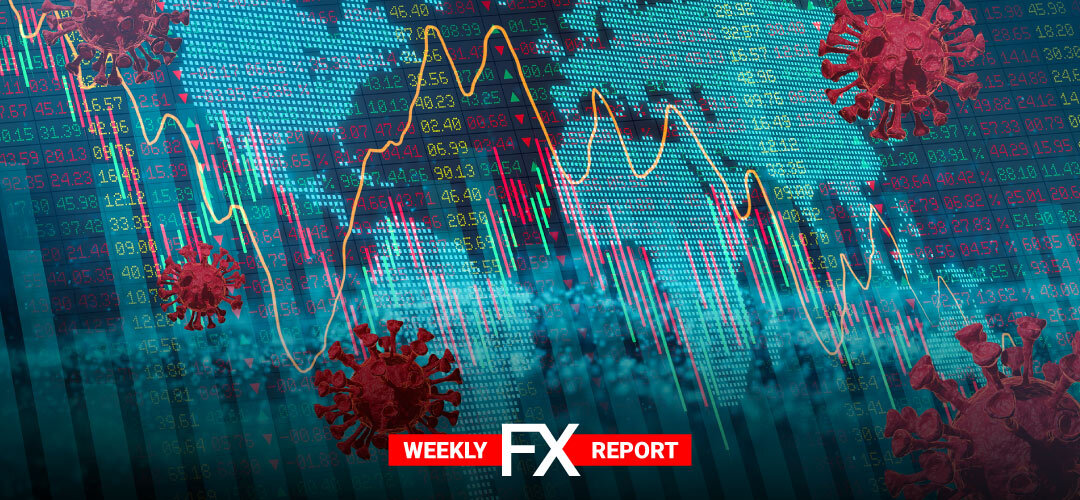Fears of a second wave of the coronavirus raising the prospect that renewed outbreaks could weigh on the recovery of economies have frightened markets.
Economies still struggle to move forward after containing the first wave of coronavirus. As the pandemic slowed down business activity earlier this year another large outbreak could roil financial markets.
A cluster of new infections in Beijing and increase of coronavirus cases globally have raised concerns of a disease resurgence. Traders are also monitoring a spike in coronavirus cases in the United States. Fears grow that another US outbreak could cause greater damage on the global economy.
The US economy officially entered recession concluding its longest expansion in history in February because of the coronavirus pandemic. Hopes for swift recovery from the coronavirus pandemic have been dashed after last week’s FED meeting. Policymakers’ first projections showed that the US economy will shrink by 6.5% in 2020.
Eurostat said GDP of the 19 countries sharing the euro contracted 3.6% quarter-on-quarter for a 3.1% year-on-year fall. The euro zone has finally opened the spending taps and taken a big step towards integration. On June 18-19, the European Union will debate a game changing 750-billion-euro recovery fund.
Moreover, the World Bank expects advanced economies to shrink 7.0% in 2020. Emerging-market economies may contract 2.5%. Further, the Organisation for Economic Cooperation and Development said that the global economy will suffer the biggest peace-time downturn in a century. Updating its outlook, the OECD forecast the global economy would contract 6.0% this year.
Following the trend of all major economies, the UK economy shrank by a quarter in the March-April period. Britain’s economy shrank by a record 20.4% in April – putting the country on course for the worst recession in more than three centuries.
START TRADINGLQDFXperts – Second wave fears shake up markets
Financial markets may be in the process of repricing the world’s most-traded exchange rate as Euro bulls eye $1.20 and beyond.
EUR/USD reversed directions last week, as the pair posted small losses. Despite severe economic conditions in the eurozone, the euro has posted gains of 2.5% since the end of April. Derivative contracts suggest the euro could surge by as much as 6% against the dollar to $1.20 by year-end.
GBP/USD slipped by 1% last week, after three consecutive weekly gains. The pound had a poor week, slipping back after it had risen 3.9% against the dollar. Analysts suggested sterling behaved like a risk currency. The British currency strengthened when improving global market sentiment weakens demand for the safe-haven dollar.
The dollar posted its worst weekly performance against the yen since late March. Dollar/yen continues to show strong volatility. The pair declined by 2% last week, as the yen recovered from losses in the previous week. In Japan, GDP for the first quarter contracted by 2.2%. This was a second straight contraction, which means that the economy is officially in recession.
After heading higher for three straight weeks, AUD/USD reversed directions last week, falling 1.4%. It was an off week for the Aussie, which has performed well in the second quarter.
The Canadian dollar reversed directions last week, as USD/CAD gained over 1%. The Canadian dollar has showed surprising resilience in recent months. Canada’s economy is slowly showing signs of recovery.
The week ahead – Major economies continue to report declines in economic growth
As a second wave of coronavirus infections revived economic worries, major economies continue to report soft and gloomy data. Global markets this week await further tests. Investors are bracing for several key events, including discussions on the EU recovery fund, Brexit negotiations, and a BoE meeting. Federal Reserve Chair Jerome Powell’s semi-annual testimony to the Senate banking committee is also in the schedule. Also, oil investors await OPEC+ committee meetings of experts later this week who will advise on output cuts.
- On Tuesday (16.06) U.S. May retail sales figures are of interest as is a key gauge of consumer spending. Experts expect figures to bounce smartly after a slump in April with a loss of 16.4%. Also, focus turns to German inflation (final reading). Inflation in the eurozone’s largest economy declined by 0.1% (initial reading), indicative of weak economic conditions. Finally, investors are waiting for BoJ Rate decision. The Bank of Japan will probably maintain its main policy tools at this week’s meetings.
- On Tuesday and Wednesday (17.06) Powell will appear before House and Senate committees to present testify on Fed’s Monetary Policy Report. Traders will scrutinize Powell’s testimony, which will outline the Fed’s view of economic conditions in the United States. Powell’s comments on the latest upbeat employment report will also be of interest.
- On Thursday (18.06) markets are waiting for the US Unemployment Claims, the BoE Decision and the Canadian ADP Non-Farm Employment. US Jobless claims have been steadily falling, from a high of 6.6 million in April to 1.5 million last week. The Canadian economy created 289 thousand jobs in May instead of analysts’ predictions about a loss of 500 thousand jobs.
Follow this week’s economic calendar.
PLEASE NOTE The information above is not investment advice.
Sources: Reuters, CNBC, BBC, The Guardian
